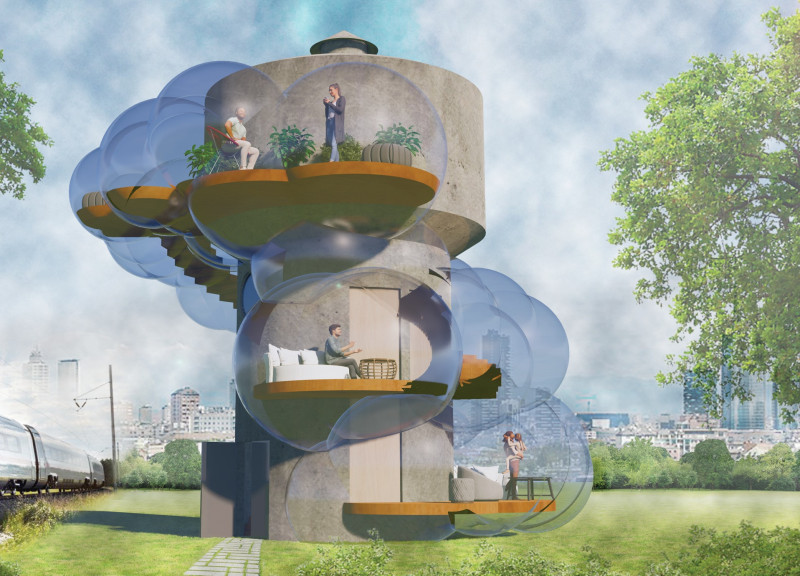5 key facts about this project
The 360° Inflatable Parasite project reimagines an abandoned water tower located in Scalo Ferroviario Porta Romana, Milan, Italy, into a lively residential space. The design addresses urban development challenges by creating a functional living environment that respects the history of the structure. The core concept integrates two tiny houses within the tower, offering an efficient housing solution that reduces the demand for new construction.
Residential Integration
The design includes two tiny houses, with one placed inside the tower and the other situated nearby. Each unit occupies a compact space, limited to 15 m², and incorporates necessary amenities such as a kitchen, washroom, storage, and combined living and bedroom areas. This thoughtful arrangement makes the most of limited space while ensuring comfort and usability.
Sustainable Features
Sustainability is a key focus of the project. The existing water tank provides a source of water for the two tiny houses. A rainwater collection system further supports its self-sufficiency. The design includes circulation paths that allow easy movement both within and around the tower, fostering a connection between the residents and the vibrant urban environment outside.
Material Approach
The inflatable structures that wrap around the tower are made from ethylene tetrafluoroethylene (ETFE). This material is known for being durable, lightweight, and highly transparent. It enhances energy efficiency by allowing more UV light inside while providing better insulation than traditional materials. These inflated volumes create adaptable living spaces that respond to different weather conditions, enriching the experience for those living there.
Community Engagement
A notable aspect of the design is the roof garden and viewing platform on top of the water tank. This feature not only improves the building's appearance but also serves as a shared space where residents can interact and enjoy views of their surroundings. The inclusion of communal areas reflects a modern understanding of urban living, where social connections are as important as private comfort.
The project creates a blend of past and present, turning a forgotten structure into a place that invites people in. With its focus on utility, sustainability, and community, it illustrates a thoughtful approach to urban living that respects its historical context while adapting to contemporary needs.



















































